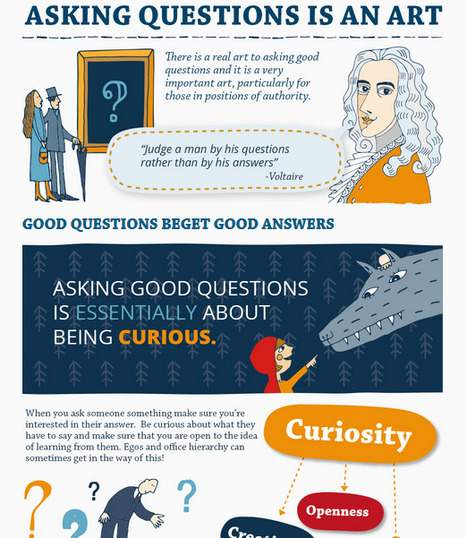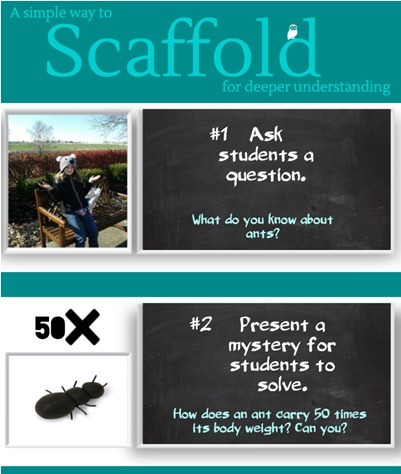Asking the right question is more of an art form than you might imagine.
Research and publish the best content.
Get Started for FREE
Sign up with Facebook Sign up with X
I don't have a Facebook or a X account
Already have an account: Login
Tech tools that assist all students to be independent learners & teachers to become better teachers
Curated by
Beth Dichter
 Your new post is loading... Your new post is loading...
 Your new post is loading... Your new post is loading...

Spice Wang's curator insight,
November 15, 2013 6:52 PM
How much time teachers would need this kind of problem-solving based scaffolding activity? When to use Thisbe kind of approach? |

Ruth Virginia Barton's curator insight,
February 13, 2015 11:30 AM
Excellent infographic about learning science through critical-thinking and student-directed inquiry |















This lengthy infographic explores the The Art of Asking Questions. Areas of the infographic include:
* Wrong Question, Right Answer
* Good Questions Beget Good Answers
* The Golden Rule = No Closed Questions
* Rules were made to be Broken
- Probe
- Funneling
- Specific to Broad OR Broad to Specific
* Leading Questions
There are also four images of "Thinkers on Asking Questions." You roll over the image and see what they have to say about asking questions
This is an infographic that could lead to a great classroom discussion on questioning.